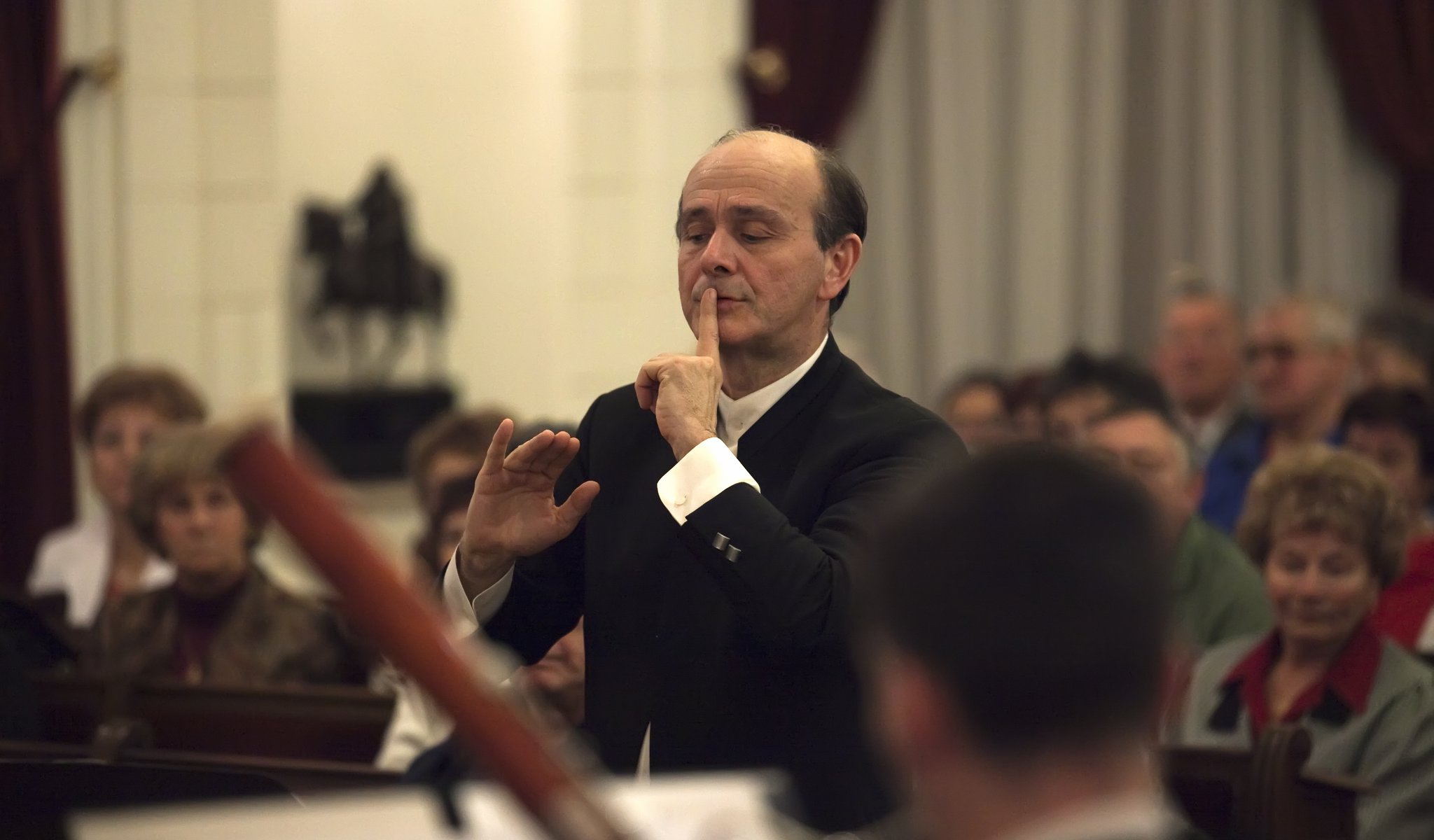
Haydn–Mozart plus II: Mozart, Cimarosa, Grandjany, Haydn
Jóföldi, Grosso, Szőke, Á. Polónyi, Takács-Nagy
Program
Featuring
Conductor
Soloist
- Anett Jóföldi (flute)
- Johannes Grosso (oboe)
- Zoltán Szőke (horn)
- Ágnes Polónyi (harp)
Other information
The event is about 2.5 hours long.
About the event
Our orchestral concert planned for April 23, 24, 25 and 26 will be held without live audience on April 24 at 7:45 p.m. and livestreamed on IDAGIO. Stream tickets are available here.
Those having tickets or season passes for the concerts in Budapest will automatically receive free access to the online concert stream through a link that will be sent to them by email before the concert.
The last concert of Gábor Takács-Nagy’s Haydn–Mozart Plus series draws an arc from lighthearted entertainment to moving drama. In between Mozart’s serenade, calling for an unusual orchestral set-up, and Haydn’s “passionate” symphony wrapping up the concert, the evening will feature works by Cimarosa, who often looked into the compositions of the Viennese masters for inspiration, and Grandjany, who played a significant role in further expanding the harp literature — to which Mozart also contributed. Classical concerts rarely include two double concertos. Our soloists have proven their skills multiple times not only as members of the orchestra, but have actually performed the very same compositions at the 2019 Sándor Végh Competition, going on to win the classical category.
Serenades often begin or end with (or begin and end with) march music, symbolizing the entrance or exit of the musicians. The Serenata Notturna also opens with a march; but for the finale, Mozart chose a tune popular in the streets of Vienna at the time, to emulate the sound of the orchestra moving away. The overture of the work written for two ensembles — a solo quartet and a string group joined by a timpani — assigns a key role to the timpani, while the minuet movement in the middle showcases the strings in an exchange of elegant and mocking phrases.
Cimarosa’s concerto also includes some mockery: one of the great figures of late-eighteenth-century comic opera, Cimarosa snuck several farcical elements into the piece, originally composed for two flutes and arranged for flute and oboe by Heinz Holliger. The first movement offers the soloists a number of themes through which to show off multifacetedtheir technique. The aria-like first movement highlights the contrast between the nimbly moving figures and the placid pulsation in the orchestra; the concerto then continues without a break, concluding with an explosive dance rondo.
The French-American Marcel Grandjany was an influential harpist of the mid-twentieth century and also composed several pieces and arrangements for solo harp. Of his few orchestral works, best-known are the Rhapsody — composed on a Gregorian tune — and the Aria, in the classical style. Today’s concert will feature his Symphonic Poem, a work rarely performed, for harp, French horn and orchestra.
The Haydn symphony wrapping up the concert was written in the spirit of the Sturm und Drang movement, known for its extreme passion. With the exception of the peaceful third movement, the gloomy F minor music is fueled by stark emotions all the way through. The slow opening movement, rich in contrasts, immediately creates drama, which only grows in the second movement, dominated by large leaps. Following the third movement, the finale marks a return to the gloomy atmosphere which, unusually in a work by Haydn, does not dissipate at the end of the piece, either.
Did you know? Mozart’s serenade was composed in 1776, Cimarosa’s concerto in 1793, Marcel Grandjany’s Symphonic Poem in 1911 and Haydn’s symphony in 1768; the Festival Orchestra last played the serenade on April 9, 2006 (concertmaster: Eszter Lesták Bedő), the concerto on May 4, 2002 (soloists: Gabriella Pivon and Alexei Ogrintchuk, concertmaster: János Selmeczi), and the Symphony on November 9, 2003 (conductor: Rudolf Barshai), all three in Budapest, and will be performing Granjany’s piece now for the first time.
Contemporary events on July 4, 1776, the Second Continental Congress approved the Declaration of Independence of the United States of America / in 1776, English painter Thomas Gainsborough completed the portrait of Johann Christian Bach / The Wealth of Nations written by Scottish philosopher and economist Adam Smith was published in 1776 / Czech composer Leopold Koželuch composed his Three Sonatas for the Piano Forte or Harpsichord Op. 38 in 1793 / Animal Intelligence, a book by Edward Lee Thorndike, an American psychologist, was published in 1911 / the premiere of Jedermann, a play by Austrian poet and playwright Hugo von Hoffmannstahl, was in Berlin on December 1, 1911 / in 1768, the first edition of Encyclopaedia Britannica was published / in 1768, Swedish philosopher and theologian Emanuel Swedenborg published his work entitled Conjugal Love: Delights of Wisdom Relating to Conjugal Love